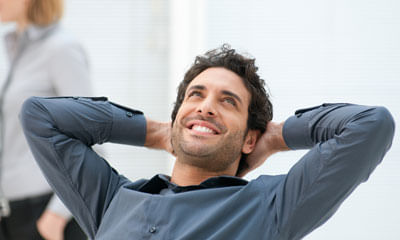Get the App
For Doctors
Login/Sign-up
Last Updated: Jan 09, 2021
BookMark
Report
Relaxation Therapy
Relaxation techniques share two components: the repetitive focus (on a word, sound, prayer, phrase, body sensation, or muscular activity) and adoption of a passive attitude (towards intrusive thoughts.)
They induce relaxation response characterized by decreased arousal and diminished sympathetic activity (decreased heart rate and lower blood pressure) and increased EEG slow wave activity.
Relaxation techniques may be subdivided into two methods, deep and brief, or by the specific strategy used to induce the relaxed state, including progressive muscle relaxation, autogenic training and breath training.
Adverse reactions are intrusive thoughts, fear of losing control, upsetting sensory experiences, muscle cramps, sexual arousal and psychotic symptoms
Adverse reactions are relaxation–induced anxiety or relaxation-induced panic.
Relaxation–induced anxiety is a gradual increase in behavioral, physiologic, and psychological anxiety, whereas relaxation–induced panic is severe anxiety of rapid onset.
Patients with a history of generalized anxiety disorder or panic disorder and those with a history of hyperventilation are more likely to experience these adverse effects.
Patients should also be introduced to deep breathing techniques that often accompany relaxation in a gradual manner and not more than couple of minutes at a time.
Relaxation techniques can relieve pain in cancer
They induce relaxation response characterized by decreased arousal and diminished sympathetic activity (decreased heart rate and lower blood pressure) and increased EEG slow wave activity.
Relaxation techniques may be subdivided into two methods, deep and brief, or by the specific strategy used to induce the relaxed state, including progressive muscle relaxation, autogenic training and breath training.
Adverse reactions are intrusive thoughts, fear of losing control, upsetting sensory experiences, muscle cramps, sexual arousal and psychotic symptoms
Adverse reactions are relaxation–induced anxiety or relaxation-induced panic.
Relaxation–induced anxiety is a gradual increase in behavioral, physiologic, and psychological anxiety, whereas relaxation–induced panic is severe anxiety of rapid onset.
Patients with a history of generalized anxiety disorder or panic disorder and those with a history of hyperventilation are more likely to experience these adverse effects.
Patients should also be introduced to deep breathing techniques that often accompany relaxation in a gradual manner and not more than couple of minutes at a time.
Relaxation techniques can relieve pain in cancer



+1.svg)
